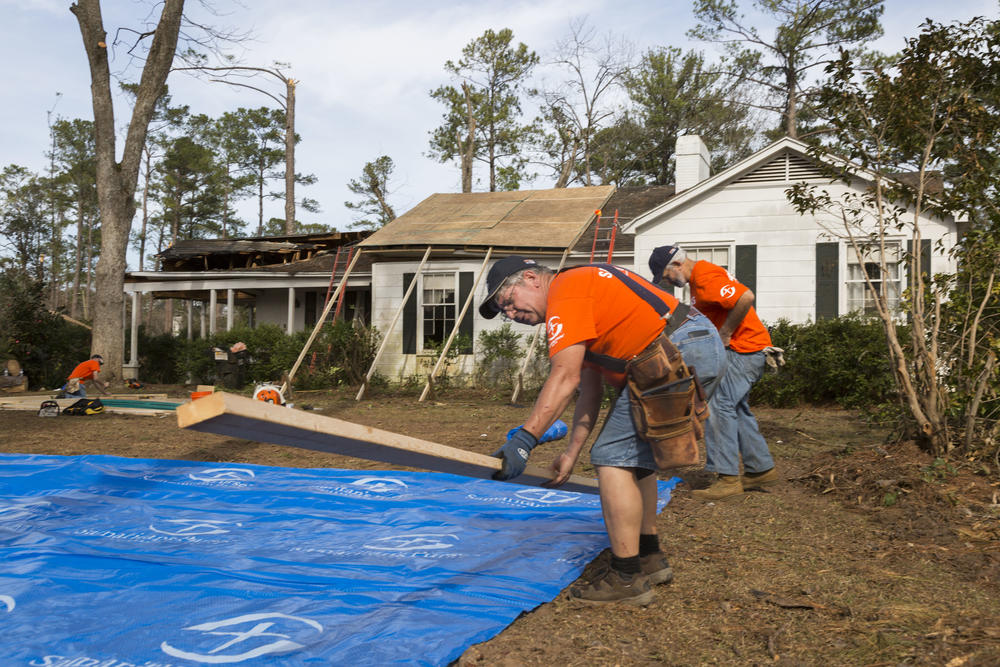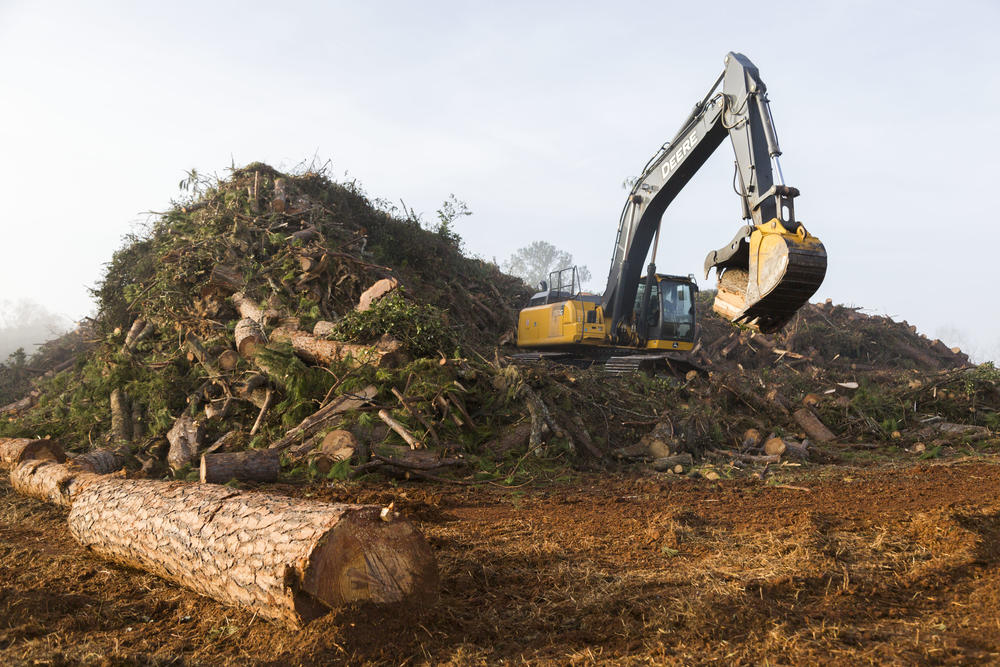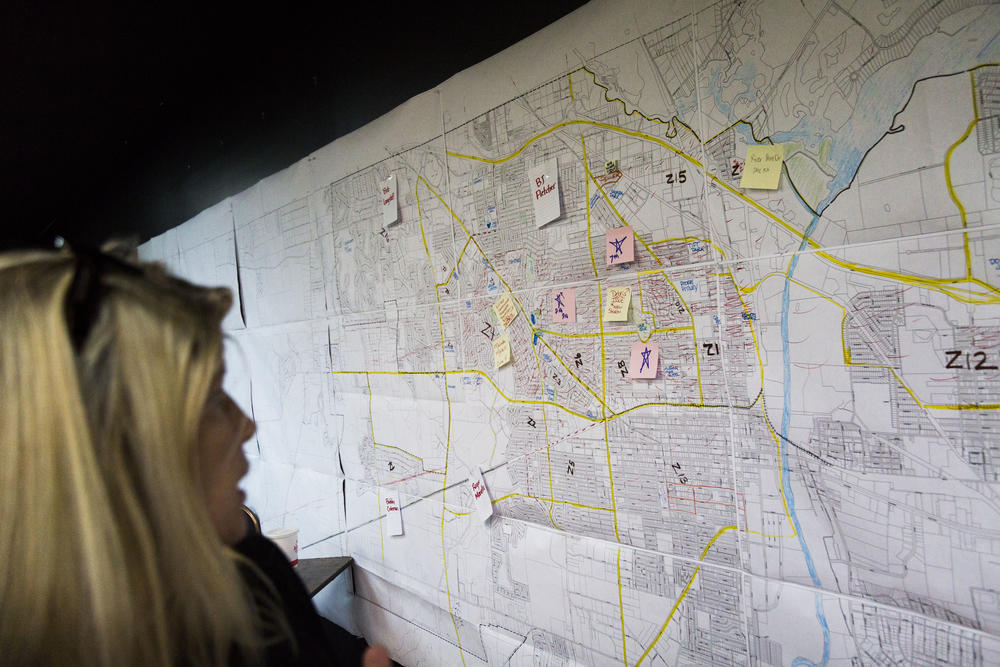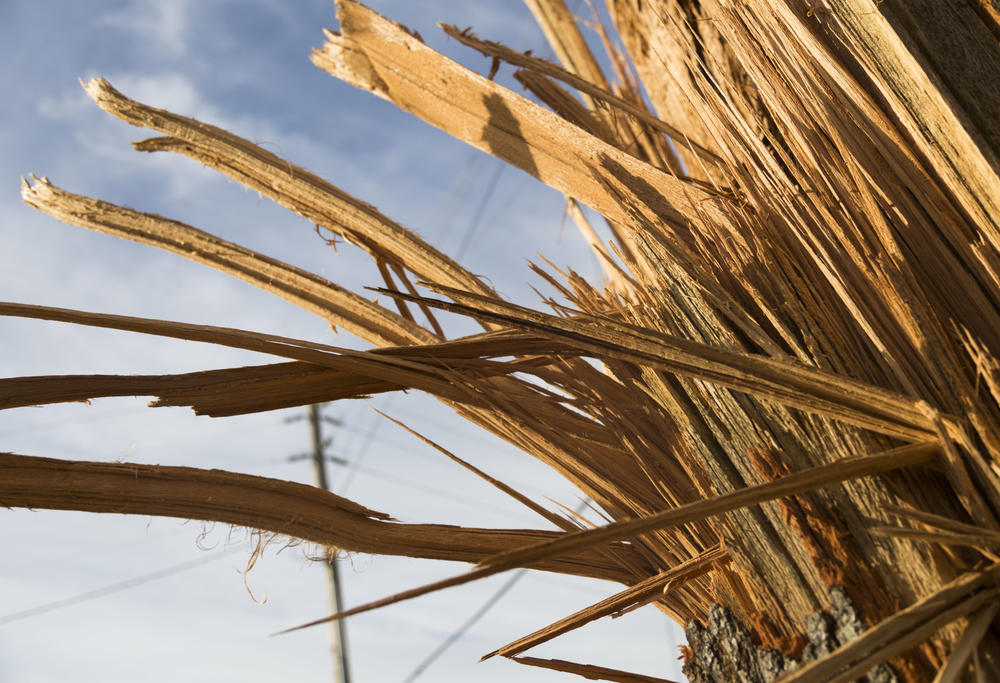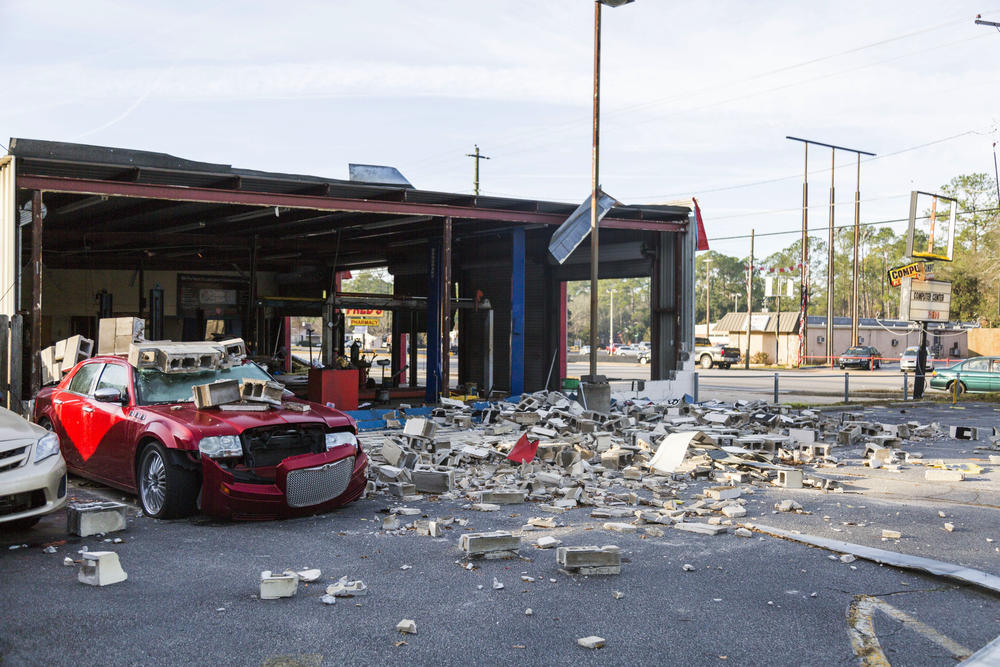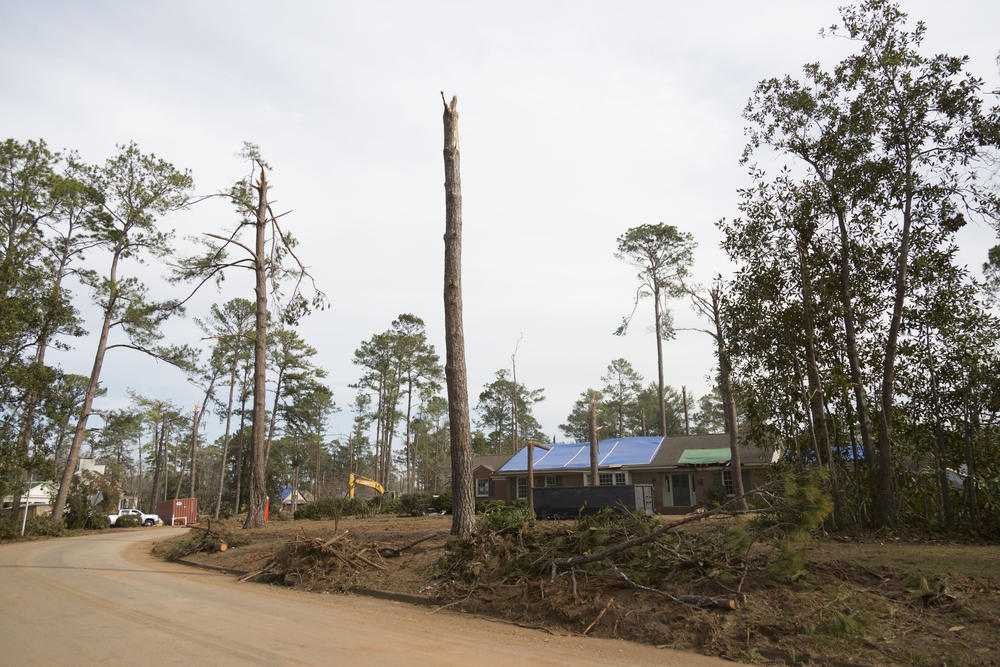Section Branding
Header Content
As Albany Recovers From Storms, Some Ask When Help Will Come
Primary Content
After the storm, Albany, Ga. picks itself up while wondering when help will come.
There is a mountain of shredded trees next to a church on Gillionville Road in Albany.
On a recent morning with the morning fog yet to lift, Brian Jefferson hauled in the day’s first load. About 20 cubic yards of limbs and tree trunks dumped at the bottom of a pile 30 feet tall and with a footprint of a ball field. Jefferson has made a lot of these trips since storms and tornados hit an eight county swath of South Georgia on January 2.
“I was working 11 hours, seven days a week. It’s just long,” he said.
His eyes welled up a little bit when he said the work has taken him away from a new baby at home.
“Other than that, it’s been ok. I’m just tired,” he said.
This was about three weeks into the storm cleanup. There are still tens of thousands 19 yard hauls to make before Albany will be cleaned up. There’s another mountain of trees on the other side of town, too. How much longer can Jefferson and others like him work like this?
“I can’t say. But whatever it take, I’ll be here to help out,” Jefferson said.
Three weeks into the cleanup, the scope of the work is still not fully in focus. The damage is spread across an area roughly the size of the Manhattan Island and property loss estimates are running into $100 million or more. As locals work their way through the mess, some are asking, where is the help from the outside world? Particularly, where is the Federal Emergency Management Agency?
Not everyone on the ground is paid to be there like Jefferson. There are hundreds of volunteers too. Marla Edmonds is at the center the volunteer work.
Edmonds works in a hair salon. Emergency management is not her thing, but she grew up in Albany, so once the storms were over, the first thing she and her husband did was hit the streets with his chainsaw to see how they could help.
“His chainsaw looked like a toy up against these mountains of oak trees piled up here,” Edmonds said.
They were working in the Avenues neighborhood of Albany where centuries old oak trees form a canopy over streets lined with well-tended homes.
“We started to noticing people kind of coming out and they're like... it's like a movie. Honestly,” she said. “You know coming out from underneath their big oaks and kind of like this look of like... what was happening?”
About that time her phone started ringing with other people calling trying to figure out where to go and how to help.
“I thought ‘You know what? I think that I can make like some kind of group in Facebook,” she said.
So Edmonds created the Albany GA Storm/Tornado Recovery 2017 Help Page as a nexus for volunteers. Inside her headquarters, the rental hall of a local seafood restaurant, Edmonds has a huge paper map of Albany and Dougherty County. It’s there she has been keeping track of who needs help and where. Easel sized notepads nearby list who volunteers are and what they can do. Edmonds has been making it up on the fly.
“You have to understand I didn't even know that a chain saw had a chain,” she said.
Now the storm recovery page has close to 5,000 members, something like ten times the number of likes for the official Dougherty County Emergency page.
Deelkas Jones is now one member of the Facebook group. She’s was out with her husband Milton Abney trying to find work when she met Edmonds on the sidewalk in front of Edmond’s office. They started talking about the storm. It turned out a hole in their rental house and five days without power had meant time in hotels and missed work.
“And that’s just been money out of our pocket,” Jones said. “I’d say about $3,000. Cause we lost groceries and everything.”
Milton Abney, Jones’ husband, said they have no renters insurance.
“Nah. Not at this moment,” Abney said. “Shoot, it kind of puts us behind.”
Chris Cohilas, chairman of the Dougherty County Commission worries that lots of residents will be put behind by the storm.
“Those folks don't have $500 right off the hip to be able to go and buy a whole new set of groceries,” Cohilas said.
Cohilas estimates that the uninsured losses in the county could be getting close to $50 million. Plus, the government aid on the ground from local and state emergency management does not include getting trees off of homes. Debris has to be at the curb before government workers will pick it up. Getting it there can run into the thousands of dollars.
“We have a little bit over 10 percent of that debris picked up right now,” Cohilas said.
So Cohilas is asking for a response from FEMA. Governor Nathan Deal has done the same.
“The governor didn't just ask for a federal declaration.He asked for a expedited federal declaration,” Cohilas said.
So why isn’t FEMA here yet? Mary Hudak, FEMA spokesperson for the Southeast, says it’s really basic Civics.
“It starts at the local level, it overlays at the state level and then when all of those capabilities are exceeded it comes to the federal level,” Hudak said.
Local and state emergency responders have to tell FEMA they have run out of resources before they can take action. Officials from the Georgia Emergency Management Agency say the report they submitted to FEMA on January 11 proves Georgia needs Federal Aid. Hudak points out, though, that the decision to render aid does not rest with the agency. FEMA only acts at the behest of the president.
“We will advise the governor as soon as we have feedback from the president on a final determination,” Hudak said.
President Obama received the original request from Governor Deal. Of course now it’s President Trump’s to consider. Trump has signalled he does not plan on beginning work until Monday. Meanwhile, there are roofs to fix and Dougherty County is expecting a stormy weekend.
